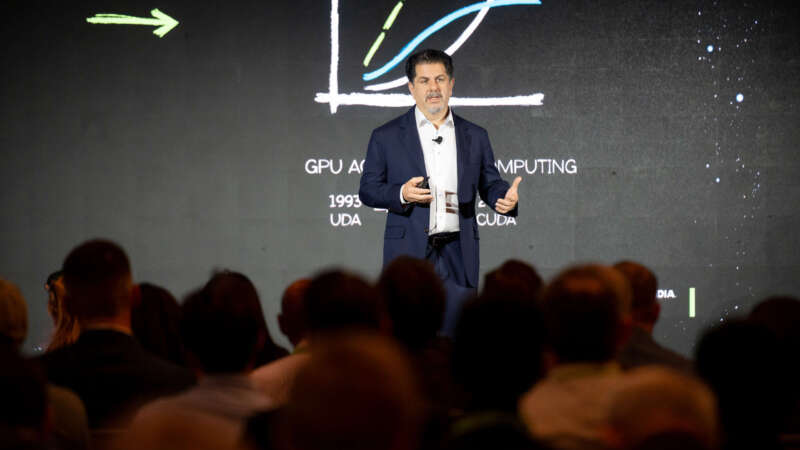
Human-like robots, or humanoids, have long been prevalent in science fiction movies – take Star Wars’ C-3PO for example. Recent advancements in artificial intelligence and physically-based simulation are accelerating humanoid robot development. NVIDIA provides 3 accelerated computing platforms – NVIDIA DGX, Omniverse, and Jetson AGX for robot makers to make these humanoid robots a reality.
Rev Lebaredian, the vice president of Omniverse and simulation technology at NVIDIA, joined the NVIDIA AI Summit on Oct. 8 to discuss how the company is helping to build the next generation of humanoid robots.
“We believe the wave that’s about to come is the next industrial revolution – essentially the extension of AI as we know it, generative AI into the physical world,” Lebaredian said. “Now, bringing it into the physical world means, essentially, we’re talking about robotics.”
“We believe the most important robots coming are humanoids,” he said. “This has been a dream for many decades. To have humanoid robots we can interact with, work with, and that can do things for us. And it’s happening right now.”
Lebaredian explained that humanoid robots offer several benefits, one being that with their human form, they are built to move around “spaces that were designed for us as humans.”
Another benefit is that it’s easier to teach them how to behave and act. For instance, a human could model how to pick up an object and move it somewhere. Additionally, Lebaredian said, “You can also leverage potentially the billions and billions of hours of examples of videos of humans doing things in the world also to help train them.”
Lebaredian said that engineers have had the mechanical know-how to build these robots for a long time, “but there was no point in doing that because we couldn’t make them smart enough.”
“With our recent advancements in AI, and particularly with transformers, LLMs, and what we all started to understand viscerally when interacting with these LLMs like ChatGPT, we now believe that we are in spitting distance of actually building a proper general purpose robot brain for a humanoid robot,” he said.
Building a robot brain is very complex, but at the core of it, Lebaredian explained that it all comes down to robot learning in simulation.
Until now, he said robots have not been trained to sense the real world properly. However, NVIDIA’s accelerated computing platforms and Omniverse, a development platform for building robot simulation and reinforcement learning applications, are now allowing roboticists to train robots with policies based on Newtonian physics, as well as perception.
“We now have a framework where we can bring these two things together. We have a system that builds the robot brain, the policies that we need, while taking into account sensing and perception in the loop,” Lebaredian said.
NVIDIA’s Omniverse platform is a development platform for building virtual worlds – but different than a video game, real-world physics apply – making it the perfect environment for roboticists to simulate workflows for generative physical AI.
Within Omniverse, robots can learn and refine their skills in simulated worlds. For example, humanoids learning from teleoperated ground truth data, and synthetic data.
NVIDIA started working on Omniverse almost a decade ago, but Lebaredian stressed that recent advancements in AI have helped to advance the platform for robotics.
Last year, NVIDIA built a standards organization for the Omniverse platform called the Alliance for OpenUSD, with founding members including Pixar, Adobe, Apple, and Autodesk. Since then, Lebaredian said more than 30 other companies have joined the organization, such as IKEA, Siemens, and Lowe’s.
“We all essentially understand that in order to simulate the physical world, create digital twins of all of the complex things we’re building, we need to have a common way to represent these worlds and pass them around to all of our different computing systems,” he explained. “If every tool is living in its own island, we have no chance of actually building a virtual world that’s comprehensive, that covers everything.”
“By itself, Omniverse, our operating systems, they don’t do anything. It’s just a bunch of technology,” Lebaredian concluded. “It takes you guys to take all of this raw technology and form it into something that’s a solution for people who have real problems.”
To learn more, watch Lebaredian’s entire session on-demand here.
